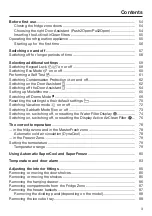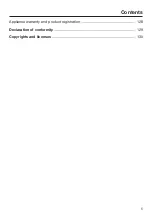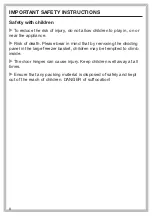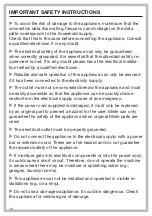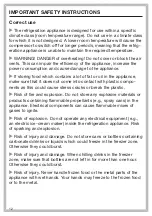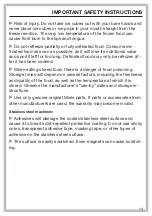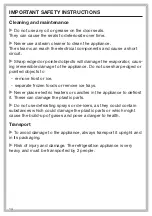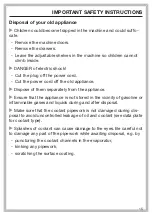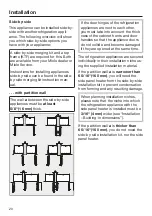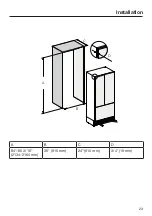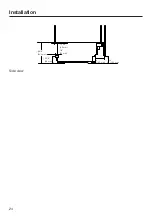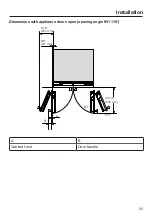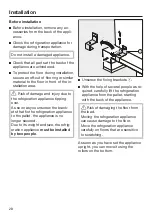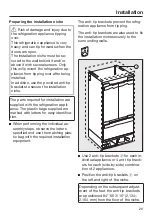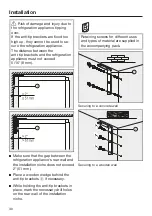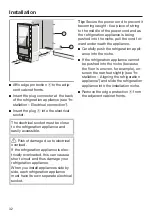
Installation
*INSTALLATION*
17
Installation location
This appliance should be installed in a
dry, well-ventilated room.
When deciding where to install your re-
frigeration appliance, please bear in
mind that it will use more energy if in-
stalled near to a heater, a range, or an-
other appliance that gives off heat. Di-
rect sunlight should also be avoided.
The higher the room temperature, the
longer the compressor runs and the
higher the energy consumption of the
refrigeration appliance.
When installing the refrigeration appli-
ance, please note the following:
- The electrical socket must be easily
accessible in an emergency and not
concealed behind the appliance.
- The plug and power cord must not
touch the rear of the refrigeration ap-
pliance as they could be damaged by
vibrations from the appliance.
- Do not plug in other appliances be-
hind the refrigeration appliance.
If installation near a heat source is un-
avoidable, observe the following mini-
mum distances between the appliance
and the heat source:
- At least 1 1/4" (3 cm)
to electric or gas stoves
- At least 11 3/4" (30 cm)
to oil or coal-based stoves
If it is not possible to observe these
minimum distances, an isolation plate
must be installed between the refrigera-
tion appliance and the heat source.
Climate class
The refrigeration appliance is designed
for use within the climate class (room
temperature range) SN-T. Do not use in
a climate class for which it is not de-
signed.
Climate class
Room tempera-
ture
SN
50°F to 90°F /
10°C to 32°C
N
60°F to 90°F /
+16°C to +32°C
ST
60°F to 100°F /
+16 to +38°C
T
60°F to 109°F /
+16 to +43°C
A lower room temperature will cause
the compressor to switch off for longer
periods. This can cause the internal
temperature in the refrigeration appli-
ance to rise with the risk of food deteri-
orating and going off.

